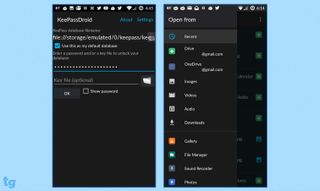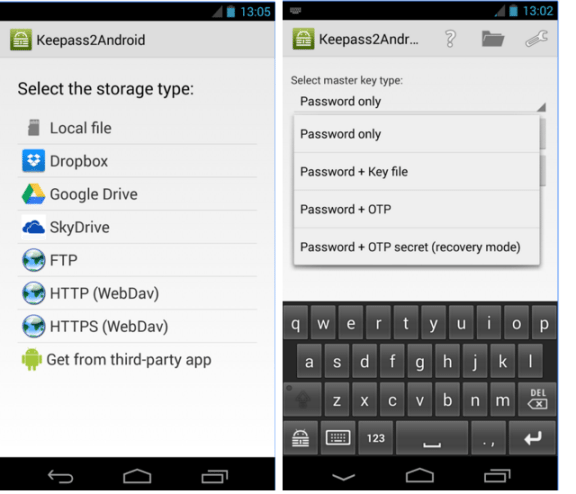

Tap on the menu button and select Share from it. How that works? Open the website that requires authentication to continue. Once you have installed the app and linked a password database to it, you can use the sharing feature of Android to search for passwords for the site you are on in the database. Here you can also modify the application timeout, that is the interval before the database gets locked again.Īnother interesting feature is how it integrates into mobile browsers. You can modify the length of characters that need to be entered in the program preferences. When activated, it will ask for the last three characters of the master password for a certain period of time once you have supplied the full password. Quick Unlock has been designed to take away the inconvenience of having to enter a secure strong password every time you need to access the database. Here you can also enable the apps Quick Unlock feature if you want. You may need to authorize the app first before you can do so, but that is a one-time thing only. It can be a local file, one that you have created previously or one that you have transferred to the Android system previously, or a remote file that is on popular file hosting services such as Dropbox, Google Drive or SkyDrive, or a custom FTP, HTTP or HTTP server.Īll you have to do then is to pick the KeePass database so that it gets loaded by the app. If you select to open a database file, you are asked to pick its location. You can load an existing KeePass database file into the application, or create a new database right on the device.

You have two options when you start the program for the first time. KeePass2Android is certainly one of the most powerful ones, as it has more to offer than access to your password database. There is no official KeePass application for Android or other mobile devices, but that is more than made up for by third-party clients that are available. One of of the conveniences of an online password manager is the availability on nearly every platform, be it a desktop PC, a tablet computer, or a smartphone.


 0 kommentar(er)
0 kommentar(er)
